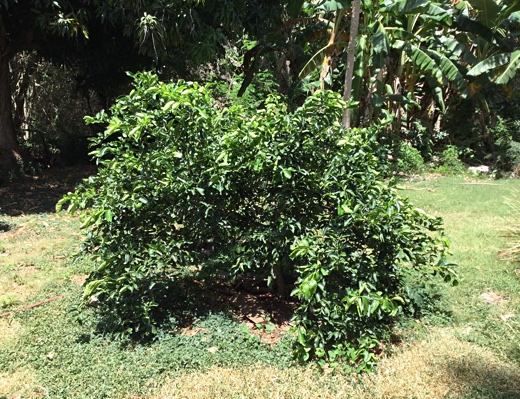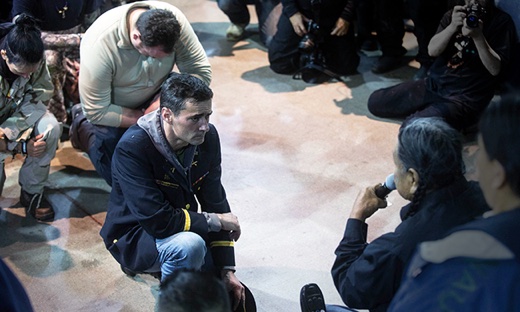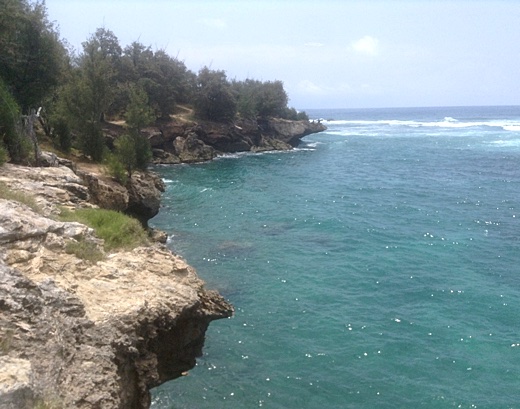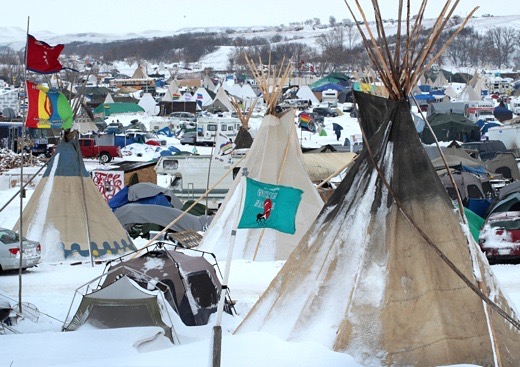SUBHEAD: When the "Shit Hits the Fan" can you be prepared for a period without civilization?
By Daisy Luther on 17 January 2018 for the Organic Prepper -
(
https://www.theorganicprepper.com/selco-who-survives-who-dies-shtf/)
 Image above: A Serbian paramilitary kicks the dead body of a woman in Bosnia in 1992. Photo by Ron Haviv. From (http://www.balkaninsight.com/en/article/capturing-the-image-of-ethnic-cleansing-in-bosnia-01-19-2017).
Image above: A Serbian paramilitary kicks the dead body of a woman in Bosnia in 1992. Photo by Ron Haviv. From (http://www.balkaninsight.com/en/article/capturing-the-image-of-ethnic-cleansing-in-bosnia-01-19-2017).
[IB Publisher's note: This article by Daisy Luther is from an interview with "Selco", a survivor of a brutal military occupation during the Balkan War in the early 1990s. For months civilians died of thirst, starvation and sniper fire in European towns. Selco is not a native English speaker and we have corrected some language.]
Did you ever wonder about the differences in how people behave in a crisis? Why some people survive and some people die? Are there characteristics that we can nurture now in good times that could help see us through bad times?
I have talked with Selco previously about who lives and who doesn’t in a long-term emergency, and a great determiner is a flexible mindset. In this interview, we go deeper into who can withstand the stress of a SHTF (Shit Hits the Fan) event and who crumbles. Today he shares his insights from the Balkan War.
Luther: What were the worst mental stresses during the situation in Bosnia that are probably common in many long-term scenarios?
Selco: Obviously, it was a situation when violence was very widely used and in a random way, often without any logic. So people lived n very poor conditions under constant physical threat.
Of most importance were mental stresses. This part of survival is in my opinion very important and commonly overlooked in the prepper community.
It is a huge topic, but we can touch on some of this in the article. I researched it a lot. A few factors were important, and will be important in any future collapse event:
#1) Loss of control
If you are living a normal average life with your family, you have a job, the kids go to school and can eat their favorite foods, and when someone is sick you go to the physician.
There are police to help if there are problems, there is law and order, everybody knows their place more or less.
You feel that you are in control of your life and lives of your family.
And then one day all that is gone. You find yourself in the world where very often things of life and death are a matter of pure coincidence or chance. For example, is there going to rain that day for enough water?
People had a very hard time of dealing with it. You can be prepared very well to some extent, but also you need to be prepared that for a number of things that you are simply not in control anymore.
#2) Hopelessness
Hopelessness is the big word when it comes to survival, and from my experience, it is hard to beat it.
A survival event that lasts for few days, even a week or two, is like a camping trip, something like people go together, share food, help, there are nights spent next to lamps, violence is possible but not widespread because people see that event is going to last only for week or two.
Some people will take a chance and do violence or steal, but the majority are going to keep it together to the end of SHTF.
Events that last for month or two are harder, more violence and a harder time, but still, people see that everything is going to go back to normal.
When you are thrown into an event that looks like (or you think ) it is going to be a permanent or very prolonged condition, rules change.
From one side you have people that are not going to be so nice and helpful to each other simply because they see this is going last and they will be forced to fight for resources; and from the other side you are going to have hopelessness.
Most humans need to see cause in order to operate in the proper way, or in other words, in hard conditions people need to see ‘light“ no matter how far it is, otherwise, you might just mentally “surrender“ because it is hopeless to push on.
#3) Re-setting of the values
In normal life, you might be a lawyer or clerk, or teacher, or famous writer and then one day the world collapses (let say because of an EMP- Electro-Magnetic Pulse- weapon).
In a few weeks you find out that you are living in the world where you are valuable if you can quickly and efficiently chop wood, or pickle vegetables, repair weapons, devise a setup to charge a car battery, or simply shoot a rifle effectively.
I am not saying a teacher or writer is useless in SHTF, but values are “re-set“. If you do not have any immediate useful skills you’ll be forced to learn one. You may be forced to understand that the values (knowledge and skills) that you had prior collapse simply may not be valuable anymore.
People had problems with this new “value system“.
#4) Responsibility
People have responsibilities in normal times taking care of their families. Those responsibilities are still there when there is a serious collapse but because the "System" is out, all help is out too.
For example, you are responsible for your old mother who has high blood pressure problem but there is no doctor anymore and there is no medicine. There is no help for your kid who has special needs, for example.
You realize that everything is up to you.
Some people simply could not take that. People could not watch their sick child because they could not help them.
Some people would simply “surrender" or leave everything.
#5) Bending the rules
Most interesting is actually how people would (or would not) bend the rules that they had prior to the collapse.
A majority of us live by some mental and moral rules. They tell us what is right and what is wrong.
It is wrong to steal, it is wrong to harm people. It is right to take care of sick and elderly.
When the SHTF you’ll be in a position to “bend“ these rules, simply because you’ll be faced with lot of tough decisions and choices.
For example is it right to steal from others if that means my child will not be hungry or die from an infection?
Is it OK to harm other people because of that? How are you going mentally live with that?
I am not advocating anything here, and I cannot give you suggestions but be sure that you’ll have to bend the rules, and that you will be be faced with tough decisions.
It is up to you how much you are going to bend or break them.
All of the factors mentioned above are examples, and usually, you meet all of them more or less, and in combinations.
Luther: What kind of person tended to do better when everything went belly up?
Selco: First, we need to formulate a definition of “person who tended to do better when everything went belly up.”
I know people who were powerful in that time: maybe because they had manpower, or a role in the black market. For example, they’d sell baby formula to people (sometimes mixed with plaster), or they simply robbed people.
When war stopped they ended up very powerful and they are still (years after) very powerful.
But they are not my definition of normal people.
We are talking now about ordinary folks, and I use the term “small circle“ when describing how to live in those times.
You need to mentally adapt to the fact that you will have to overcome some serious problems, but what is more important you need to adapt to the fact that some of the problems cannot be solved, some people will not survive, and you still will have to move on.
That small circle is your family or your group, and while the world outside is falling apart that does not mean your family needs to fall apart. You will just have to adapt to the new world.
Many people survived hard times, some of them by doing bad things. Other survived but fell apart when they found themselves back in normal times.
One thing about who did mentally good in those times is that people who had support from other people (family, friends) in that time did good.
It is very hard to be alone during events like that, especially if it is prolonged, of course, because obvious reasons, for example security reasons (guarding home), or simply resources gathering.
But when it comes to the mental aspect you need to have support from trusted people (just like they are going need that support from you) otherwise resetting your values is much harder.
Hopelessness will kick down. Simply bending the rules too much may change you in a way that, in the end, turns yours into something that is more animal than human.
Luther: Do you remember any stories you can tell about specific people who thrived?
Selco: Ordinary folks usually did not thrive. We all dragged ourselves through that way-too-long period feeling lucky if we were alive, with all parts of our body intact, and with families alive.
Everything else was day by day.
I remember this guy, I’ll call him Ed here, he was the man with information.
You need to know that there was a complete information blackout, and even if you could somewhere find a radio most of the stuff that you heard on it was pure propaganda junk.
When you find yourself cut off from real information, all that you are going have is a whole bunch of rumors and misinformation, and only then you realize how much people are used to having information.
I cannot even remember what kind of ridiculous information I have heard in those times, and I believed much of it because I needed to believe in something.
I have heard (and believed) probably 100 times that peace is coming in 3 days, or a new big UN convoy with food for everybody coming to the city tomorrow, big enemy movements there.
People need to know. It is human nature.
And during very hard times people are simply ready to believe in a lot of things that look like clear nonsense in normal times.
Note: Have a means to communicate with other people, CB, radio, satellite phone, ham radio. To hear correct information, it is valuable for many reasons - including mental health.
Ed was the guy who spread rumors, information, and news; and people would give him food for that information.
I believe we all deep in ourselves knew that it is probably just rumor, but “Ed said yesterday“ was some kind of information, something to talk about, something to hope for.
Ed survived alone whole event (pretty rare) thanks to the fact that “he had information.”
Luther: What kind of person suffered the most?
Selco: Survival is about being able to adapt to new things, and those new things are bad mostly.
There are many factors here that are influencing how you gonna mentally cope with collapse. A few of those are:
- how prepared you are (how much food, water, medicines in stock)
- how many usable skills you have? (natural remedies knowledge, gardening, technical skills, fighting skills…)
- how dependent you are on the system? (you are living in city apartment building or in a small rural community)
- what kind of group (or family) you have around you, what kind of skills those people have, how close and trusted are those people?
These are just a few examples. Even if you have all of the above you still need to have mental strength.
Or in other words, you may be perfectly prepared survivalist when SHTF just to find that you are simply falling apart mentally.
In my case (I am talking about people who were not preppers at all) people who suffered most were people who failed to recognize the new rules.
We had (in that time, in my family), a college professor, a man that was pretty important in normal times. Students were kinda trembling when they used to see him.
When SHTF he mentally fell apart and become useless because he felt that suddenly he become nobody, completely unimportant.
Every scum with a rifle was more important than him.
It is not about that we could not find a use for him, it is about fact that he was “plugged-in" so heavily in the system and when that system was gone he felt there was no sense to anything.
He did not want to try to be useful in any other ways.
One definition would be that people who are “plugged-in" or depended too much on the system had worst time when system disappeared (SHTF).
Luther: What are some things that can help a person who is having a difficult time during a crisis?
Selco: I mentioned that you need to have support from other people, but also you need to have peace of mind.
It is easier said then it is done, but yes, faith and religion, or kind of spiritual-mental order helps a lot.
I cannot say that religious people had less hard times, but I am sure that religious people went more peacefully through that hard time because it helps you to make sense of everything.
Personally, I had a kind of “philosophy“ during that time. It went something like “I’ll do whatever I can, and the rest is not in my hands anyway.“
Over the times it grew into “It will be whatever it has to be.“ It worked for me at that time.
It sounds simple, but this philosophy helped me through some of the hardest periods because I understood that I can do only do so much. There were so many things that were way out of my control, and way random. If I worried too much about it I might lose my mind.
It worked for me then, but remember that I was not prepared. Preppers today are more prepared, and by combining that prepping with peace of mind, it makes even more sense.
Remember that you need to find sense in life when SHTF. You need to have reasons to push on and on.
God, faith, kids, love… you need to have some reason and to stick to it.
It can be things like teaching others about herbs, or food growing.
If you do not have good reasons you either end up dead because you stop caring, or simply you turn to an animal just following the most primitive instincts.
Luther: What are the things that made people feel better and helped recapture some normalcy?
Selco: I have to say that drugs and heavy alcohol drinking were in use very much, but not as a mean to recapture normalcy, it was more to get lost – to forget reality.
You need to have a “vent“ - it is different for different people. As I said, for a lot of people it was alcohol or drugs, for me it did not do the complete job and often it was dangerous to get “lost“ in times like that.
It was very usual to see people smoking marijuana, people who never even heard of it prior the SHTF.
For me, two things were like “charging my mental batteries“ – music and reading.
Music was rare, and it was actually if you stumble on someone who plays guitar, reading was more available, and for me, it was like I was still there but I had escaped to a better place while reading or listening music.
In some bad situations I did find myself singing songs, maybe I looked retarded in that moment because of that, but actually it helped.
When you are dirty, hungry, insecure, frightened and worried for your family, and when all that goes for months, you need something that going to make you feel fine for some time, not to forget all troubles (like with heavy drinking or drugs maybe) but more like to push all worries aside for a bit.
Note: do not mix alcohol abuse with fact that it is a great idea to store alcohol for SHTF. Have alcohol for a trade, or drink, but do not try to solve heavy times with alcohol abuse, it does not work.
Small snacks, like candies, are precious things as a mental help.
Check today what kind of small things comfort you when you are down or having problems, and count on that when the SHTF. Those small things will probably comfort you ten times more then.
Luther: Are there specific personality traits that we can focus on now which would help us through a situation like this?
Selco A sense of humor! In that time, for me, a friend with a good sense of humor was worth some rifles or and a pile of MREs.
A good sense of humor is an important survival skill and often overlooked. I am not joking.
And storytelling.
We had in our family old man who was guerilla fighter during WW2, and he combined both of these qualities.
In hard times, when we were more or less desperate he would tell us stories of his fighting in WW2 – how they fled from the Nazis, how they starved, how they froze in the woods.
And over the time it helped.
For example, one of us would comment “Oh, there is only one can of food today for 5 of us" and then he would say “Oh, you wimps, it is piece of cake, during the WW2 in the German encirclement I ate my shoe for a week.“
And for whatever hard time in our SHTF, he would have a story of “Oh, you wimps, during the WW2 I…“
Over time it became partly a joke, but also partly a serious thing.
Even between each other, when we saw it is a hard situation, we would joke “Shit, this is bad, we are in serious trouble now, call grandpa with one of his “oh, you wimps, during the WW2“ stories.
That old guy knew exactly what kind of mental relief we needed – joking and storytelling how someone else had hard times and how he managed to survive.
He had a sense of humor, a gift for storytelling, and he had spirit.
Thanks to him I grew the habit of using humor in hard situations.
.









